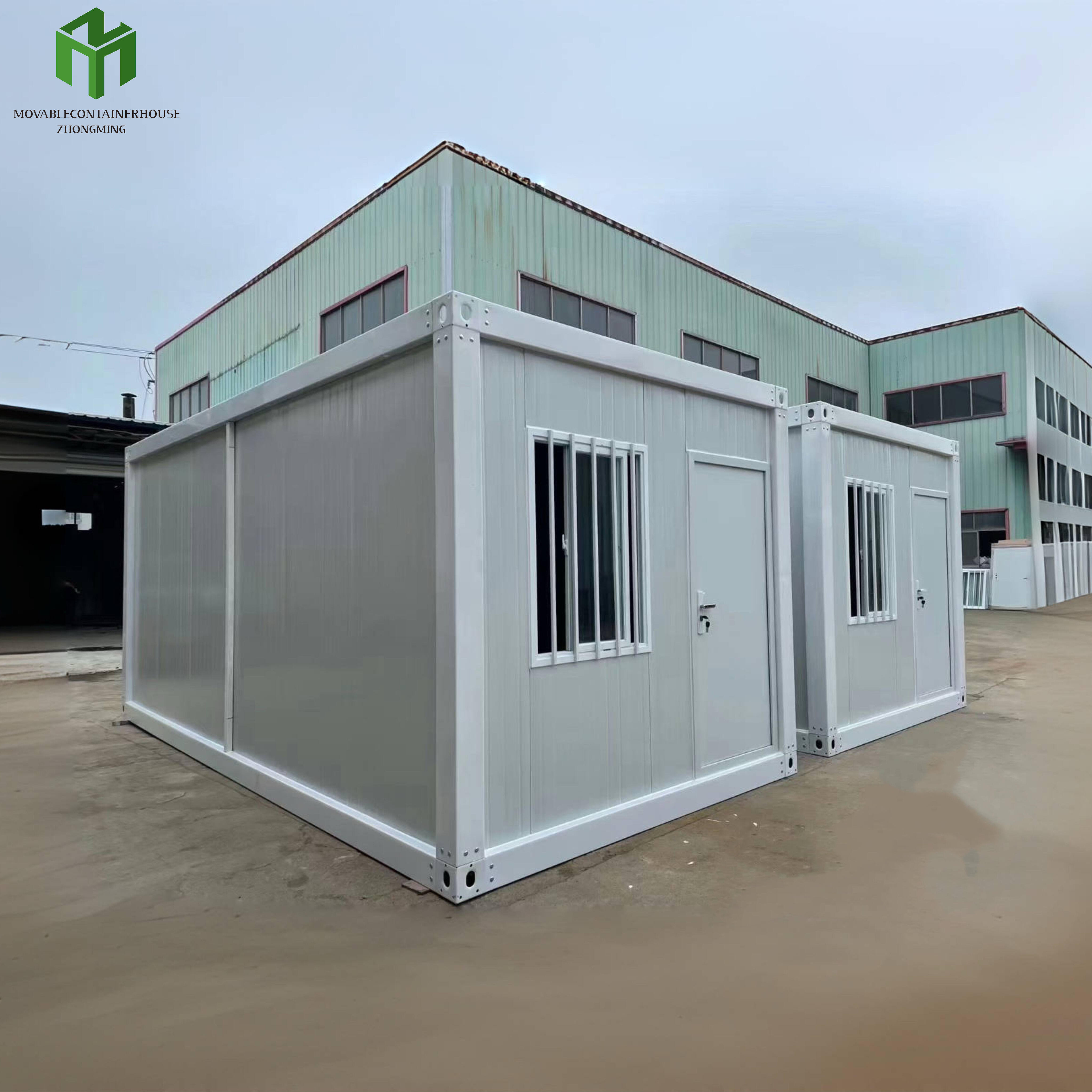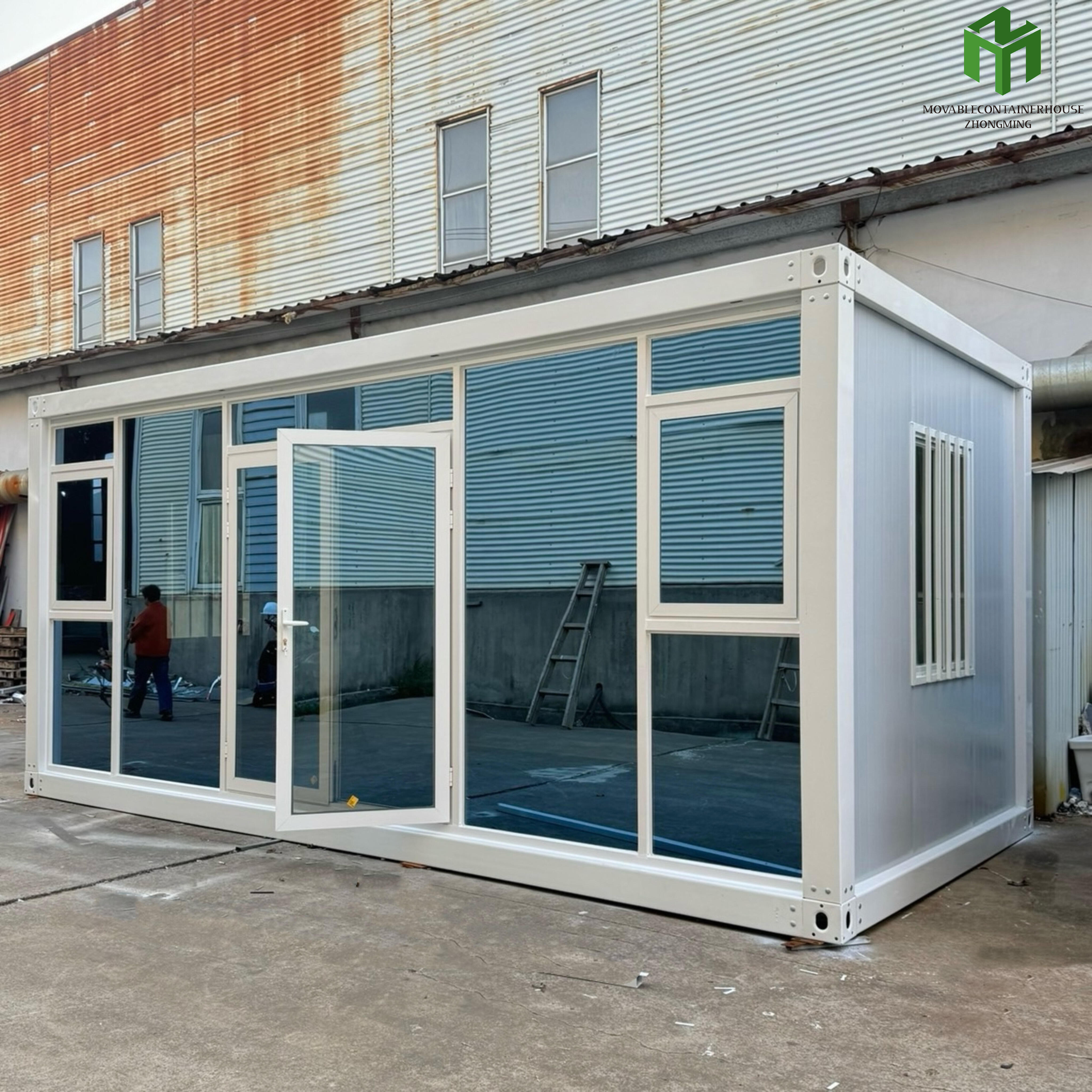Modern families seeking affordable, sustainable, and flexible housing solutions are increasingly turning to modular container houses as an innovative alternative to traditional construction. These repurposed shipping containers offer remarkable versatility, transforming industrial cargo units into comfortable living spaces that meet contemporary family needs. The growing popularity of container-based housing reflects a shift toward eco-conscious living while addressing housing affordability challenges across diverse markets and demographics.
Cost-Effectiveness and Financial Benefits
Lower Initial Investment Requirements
Families choosing modular container houses benefit from significantly reduced upfront costs compared to conventional home construction. The average container home costs 30-50% less than traditional stick-built houses, making homeownership accessible to middle-income families previously priced out of housing markets. Base shipping containers provide structural foundations at fraction of conventional building material expenses, while standardized dimensions streamline design and construction processes.
Construction timelines for container homes typically range from 2-6 months versus 6-12 months for traditional builds, reducing labor costs and temporary housing expenses during construction periods. Families can allocate saved resources toward interior customization, energy-efficient systems, or property improvements rather than basic structural elements. This financial advantage particularly benefits first-time homebuyers and young families establishing their initial household investments.
Reduced Long-Term Maintenance Expenses
Container housing materials require minimal ongoing maintenance compared to traditional wood-frame construction susceptible to termite damage, rot, and weather deterioration. Steel container structures resist pest infiltration and environmental degradation, reducing annual maintenance budgets for families managing tight household expenses. Protective coatings and proper insulation extend container lifespan beyond conventional residential materials while maintaining structural integrity.
Energy efficiency improvements in modular container houses contribute to lower utility bills through superior insulation options and compact space heating efficiency. Families report 20-40% reductions in monthly energy costs compared to similarly-sized traditional homes, creating long-term financial benefits that compound over decades of occupancy.
Environmental Sustainability and Eco-Friendly Living
Recycling and Waste Reduction Impact
Converting retired shipping containers into residential spaces represents significant environmental recycling, diverting industrial waste from landfills while creating functional family housing. Each repurposed container prevents approximately 3,500 kilograms of steel from entering waste streams, supporting circular economy principles that environmentally-conscious families increasingly prioritize in housing decisions.
Modular container houses require fewer raw construction materials than conventional builds, reducing environmental extraction impacts and transportation emissions associated with traditional building supplies. Families choosing container homes actively participate in sustainable living practices while creating comfortable residential environments that align with environmental responsibility values increasingly important to modern households.
Energy Efficiency and Carbon Footprint Reduction
Compact container home designs naturally promote energy efficiency through reduced heating and cooling requirements compared to sprawling traditional houses. Strategic insulation placement and window positioning optimize thermal performance, enabling families to maintain comfortable living temperatures with minimal energy consumption throughout seasonal variations.
Integration of renewable energy systems becomes more cost-effective in container homes due to smaller energy requirements and simplified installation processes on standardized structures. Solar panel installations, energy-efficient appliances, and smart home technologies create net-zero or net-positive energy homes that eliminate utility bills while reducing family carbon footprints significantly.

Design Flexibility and Customization Options
Interior Layout Adaptability
Container home interiors accommodate diverse family configurations through flexible floor plan designs that maximize functional space utilization. Open-concept layouts eliminate unnecessary walls, creating spacious environments that feel larger than actual square footage while maintaining distinct living zones for family activities, work, and relaxation.
Modular container houses support easy reconfiguration as family needs evolve, with removable interior walls and adaptable storage solutions accommodating changing household dynamics. Growing families can modify spaces for nurseries, home offices, or teenage bedrooms without major structural renovations required in traditional construction.
Multi-Container Expansion Possibilities
Families can expand container homes by adding additional units as space requirements grow, creating connected living complexes that maintain architectural cohesion while providing increased square footage. This modular approach enables gradual home expansion aligned with family growth and financial capacity rather than requiring complete relocations or major renovations.
Creative container arrangements support unique architectural features including multi-level designs, outdoor courtyards, and covered outdoor living spaces that enhance family lifestyle options. Professional designers increasingly specialize in container home configurations that maximize aesthetic appeal while maintaining practical functionality for diverse family requirements.
Durability and Structural Reliability
Weather Resistance and Safety Features
Shipping containers withstand extreme weather conditions during ocean transport, providing exceptional structural stability for residential applications in various climate zones. Steel construction resists hurricane-force winds, seismic activity, and temperature fluctuations that challenge traditional building materials, offering families enhanced safety and security in their living environments.
Proper foundation systems and structural modifications ensure container homes meet local building codes and safety standards while maintaining superior durability characteristics. Families benefit from reduced insurance premiums due to fire-resistant steel construction and enhanced security features inherent in container design specifications.
Longevity and Investment Protection
Well-maintained modular container houses provide decades of reliable service with minimal structural degradation, protecting family housing investments over extended periods. Steel containers designed for 25-year commercial shipping lifecycles offer residential durability that often exceeds traditional construction longevity when properly converted and maintained.
Property values for well-designed container homes continue appreciating in markets embracing alternative housing solutions, providing families with solid investment returns while enjoying unique living environments. Architectural innovation and sustainable living trends support continued market acceptance and value appreciation for quality container home developments.
Speed of Construction and Move-In Timeline
Streamlined Building Processes
Container home construction benefits from standardized dimensions and pre-existing structural frameworks that accelerate design and building phases significantly. Families can move into completed container homes months earlier than traditional construction schedules allow, reducing temporary housing costs and enabling quicker establishment of permanent family residences.
Prefabrication opportunities enable interior finishing work to occur simultaneously with site preparation, further compressing construction timelines and reducing weather-related delays common in traditional building projects. This efficiency particularly benefits families with time-sensitive housing needs or those coordinating relocations for employment or educational opportunities.
Reduced Construction Disruption
Modular container houses minimize on-site construction activity compared to traditional builds, reducing noise, dust, and neighborhood disruption during building phases. Families building container homes create fewer conflicts with existing neighbors while completing construction projects more quietly and efficiently.
Weather independence during construction phases enables year-round building schedules that avoid seasonal delays affecting traditional construction. Container modifications can occur in controlled workshop environments before site delivery, ensuring consistent quality while reducing weather-related construction interruptions and timeline extensions.
FAQ
How much do modular container houses typically cost compared to traditional homes
Modular container houses generally cost 30-50% less than comparable traditional homes, with basic single-container units starting around $50,000-80,000 including conversion costs. Multi-container family homes range from $100,000-200,000 depending on size, finishes, and location, significantly below traditional construction costs for similar square footage.
What permits and approvals are needed for container home construction
Container homes require standard building permits, zoning approvals, and compliance with local building codes like any residential construction. Some jurisdictions have specific container home regulations, while others evaluate projects under existing residential building standards. Professional consultation ensures proper permitting and code compliance throughout the construction process.
Can container homes be financed through conventional mortgages
Many lenders now offer financing for container homes that meet local building codes and are permanently affixed to approved foundations. Conventional mortgages, construction loans, and alternative financing options support container home purchases, though requirements may vary between lenders and local markets.
What insulation and climate control options work best in container homes
Spray foam insulation provides excellent thermal performance for container homes, while rigid foam boards offer cost-effective alternatives. Climate control systems include mini-split heat pumps, radiant floor heating, and energy-efficient HVAC units sized for container home square footage. Proper insulation and ventilation ensure comfortable year-round living in various climate zones.


